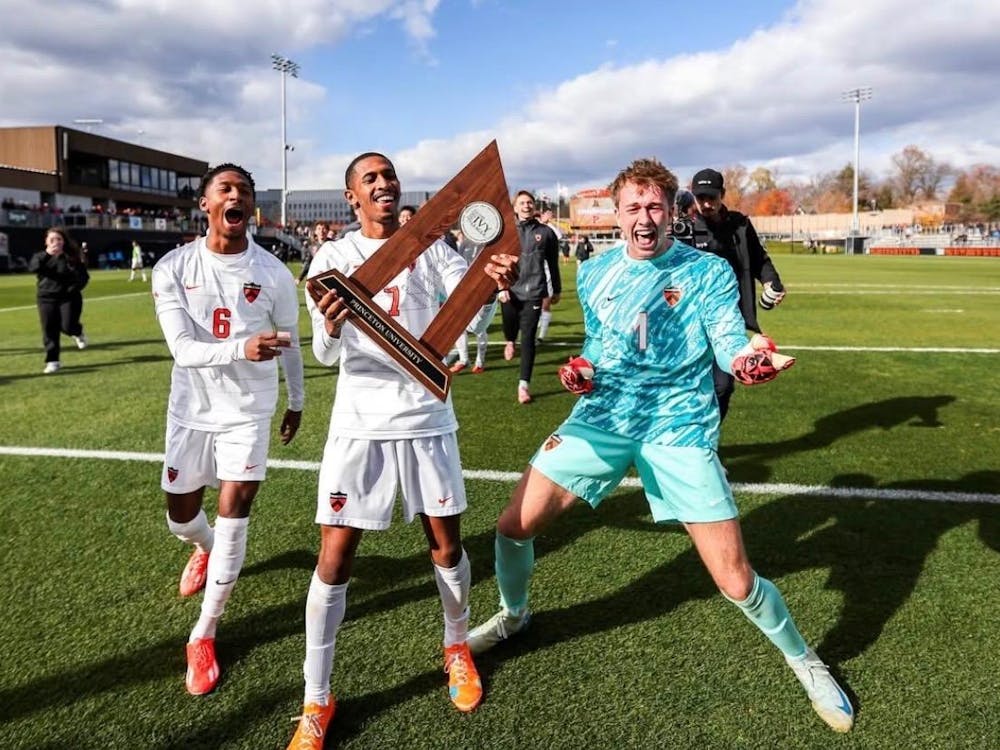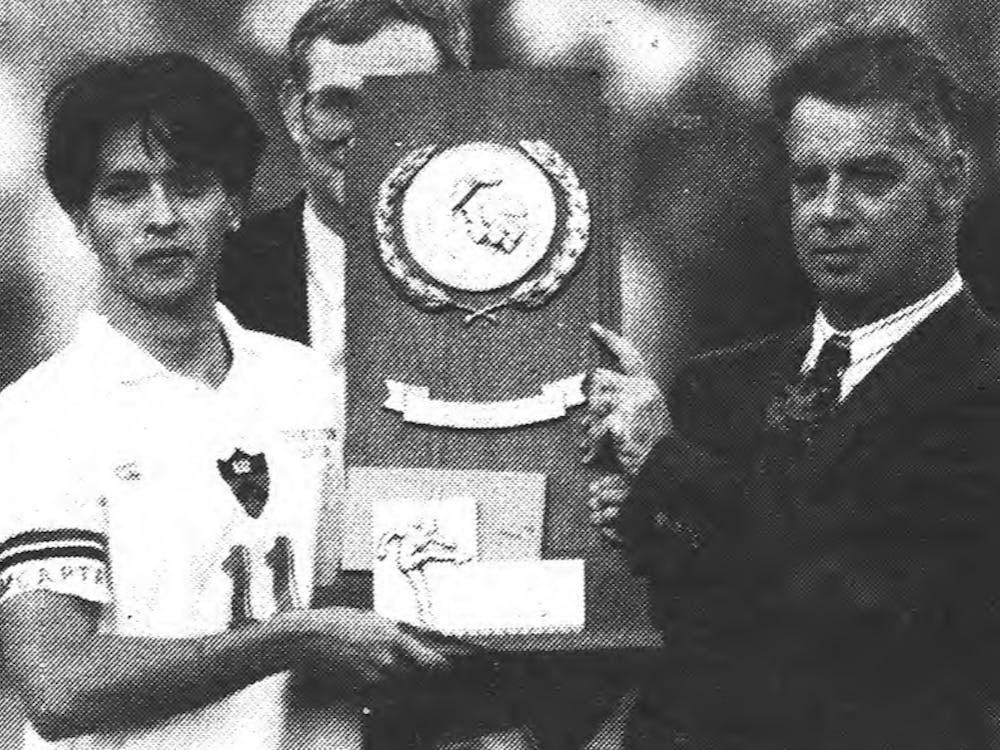For its 25th reunion, the Class of 1887 provided the University funds to build a boathouse. More than 85 years later it seemed that the time had certainly come to give that boathouse a much-needed make-over.
Now, almost three years after it was originally proposed to renovate the Class of 1887 boathouse into a more modern and better-equipped facility, the new complex is nearly complete.
Slated to be finished in early October, the new rowing center will be named in honor of the late C. Bernard Shea, a member of the class of 1916 and a rower while at Princeton. Shea's wife, Irene C. Shea, donated four million dollars for the renovation of the boathouse.
'Meaningful'
"I have wonderful memories of returning to campus with my husband in the 1950s to watch the crew races," Mrs. Shea said. "And, it is especially meaningful to me to help the many students who love rowing and Princeton, just as my husband did."
The crew program has grown considerably since Shea rowed for the Tigers and since the boathouse originally was built in 1913. Lightweight men's, women's open and women's lightweight crew, which were added in 1922, 1972 and 1997, respectively, have expanded the crew program to one that includes more than 160 participants and have created a need to retool and enlarge the current facilities.
"The building wasn't built as a training facility," assistant men's heavyweight coach Greg Hughes said. "We had a ballroom that was turned into an erg room. And we had to get all of the athletes through that room."
The rowing facility, renamed the C. Bernard Shea Rowing Center, will now have an additional 13,500 square feet, making it a now-spacious 33,500-square-foot complex. In addition, the rowing center will include a 16-person rowing tank, one repair bay, seven boat bays and four large workout spaces.
'Renovated'
"Mostly due to the expansion of the crew program, we were very short on space and a lot of the utilities were old fashioned," women's lightweight head coach Heather Smith said. "In the past years, our equipment was archaic. All of that has been renovated."
The center also will enjoy enhanced heating and ventilation systems and will be more accessible to the handicapped. Other perks include a restored club room, spacious locker rooms, offices for the coaching staff and a two-bedroom apartment.
"The rooms are set up to accommodate the athletes," Hughes said.
All of these additions should serve to improve the Princeton crew experience.
"I would expect it to enhance our training," Smith said. "There are more ergometers and a lot of strength training equipment. There's space for meetings, to watch videos and to have one-on-one meetings."

The state-of-the-art facility should also impress prospective freshmen considering rowing at Princeton.
"It will be more of a pull for people coming next year," sophomore heavyweight Kalle Crafton said. "The crew itself had such a great reputation. [And] they will know they have a really nice place."
Recruitment help
In addition, the new training facility should attract students on campus, students the crew teams depend on to fill their rosters.
"It is a big help for recruiting kids that are walk-ons on campus,"' Hughes said. "Kids are excited because of the opportunities that the building provides for them."
And with the new facility, these walk-ons and freshmen will have a much easier time training than the rowers last year.
Though the construction was set back from Lake Carnegie to protect the lake and to make the project less visible from Washington Road, it took its toll on the rowers, who had very limited access to the boathouse until after Spring Break. Forced to hold fall practice meetings outside, place their boats on temporary racks and spend their winter training in the dusty and unheated Armory, the rowers gained more access to the boathouse after Spring Break. At that time they obtained lockers and could finally keep their boats in the boat bays within the complex.
"Last year, was rough but a good lesson to understand what it's like for other places," Smith said, referring to schools that do not have stellar crew facilities.
"It wasn't very convenient but it worked," Crafton said. "It was sort of a sacrifice for something better."
Now, with the construction nearly complete and with the days of erging in the Armory behind them, it appears as though that "something better" is just around the corner.
"It will be 100 percent better," Crafton said. "We will have a top facility. It's pretty much as good as it gets."







